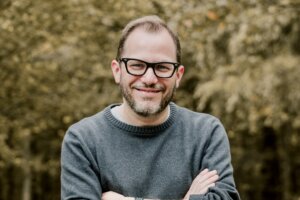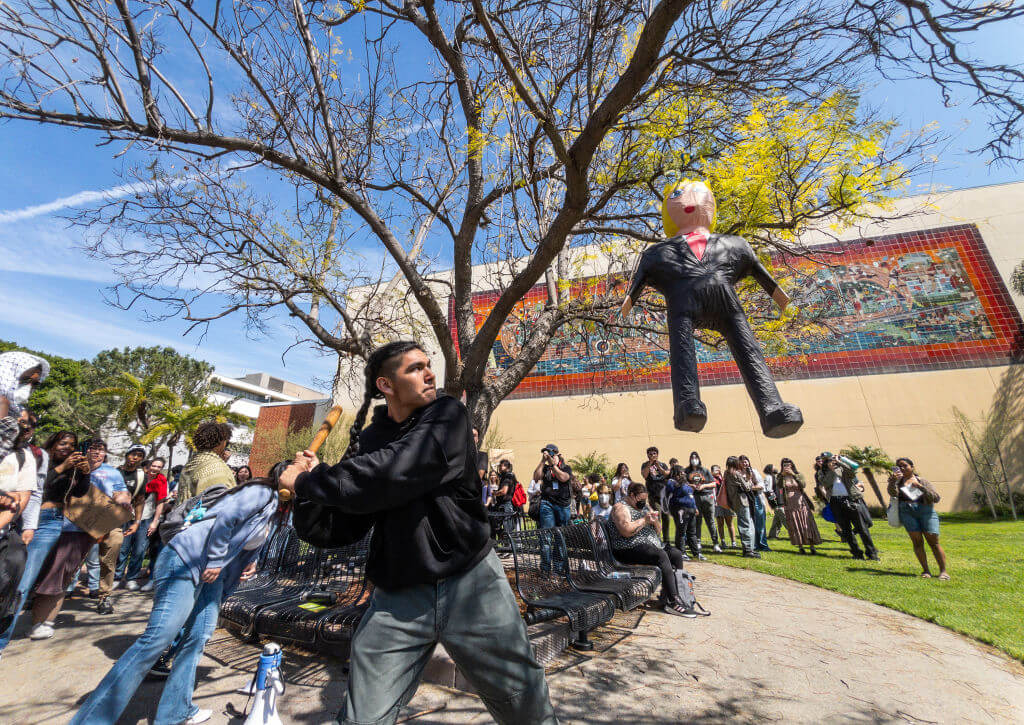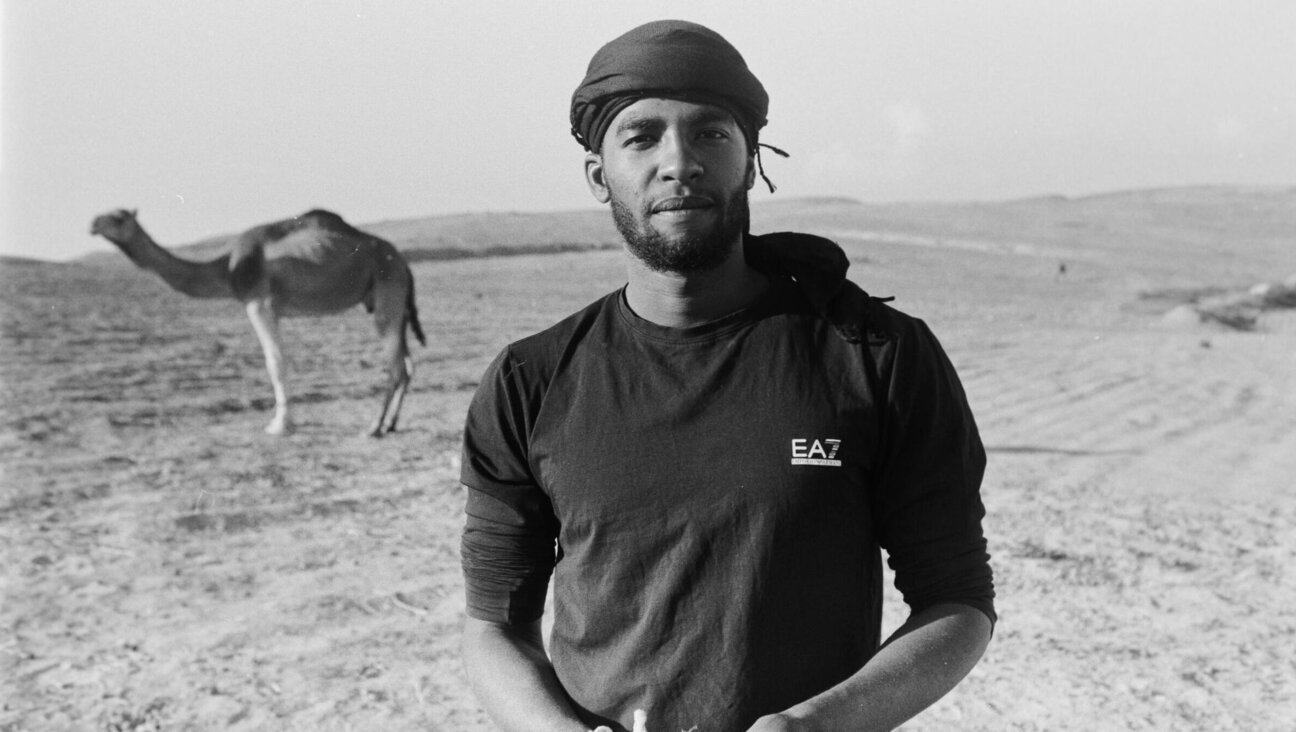This article is part of our morning briefing. Click here to get it delivered to your inbox each weekday. Beyond ‘The Golden Bachelor’: Meet Jewish couples who found love later in life The first episode of ABC’s The Golden Bachelor, featuring a 72-year-old widower and two dozen senior women vying for his affection, drew 7.7 million viewers. That’s over a million more than watched the premiere of the last edition of the series, which starred a 26-year-old bachelor. Inspired by the show, our contributor Stav Ziv set out to find Jewish couples who met around or well after their 50th birthdays. ‘We struck gold twice’: Widowers Carol Osher, 71, and Ed Reingold, 77, met on SawYouAtSinai, the Jewish matchmaking site, and began dating, despite one living in Illinois and the other in New York. Today, they have homes in both states and are often traveling visiting their six children, 19 grandchildren and two great-grandchildren.
Clergy couple: Rabbi Joe Hample, 67, and Barry Wendell, 73 and a cantor, met in – where else? – a synagogue. Nearly two decades on, they’re glad to have broken the unofficial rule of the LA synagogue where they met: Don’t date within the shul. |
Clockwise from left: Alan Poisner and Sharon Lowenstein Poisner; Arnold Schwartz and Ellen DuBois; Rabbi Joe Hample, left, and Barry Wendell. (Courtesy) |
Missed connections: Alan Poisner, 88, and Sharon Lowenstein Poisner, 85, spent most of their lives in the Kansas City area crossing paths without actually running into each other. They were born at the same hospital and their sons were in the same Boy Scouts troop. They finally met in a retirement home. “You can’t deny the synergism,” Alan said. “The two of us together are greater than either one of us.” Their kids got married. Then they did: Genrietta Lagutina, 85, and Eugene Plotkin, 91, met in 2002 when Genrietta’s daughter married Eugene’s son. “Each day for me is a holiday, each morning for me is an event,” said Genrietta. What’s her advice to older singles who want to be in a relationship? “Never lose hope.” |
Heinrich Himmler inspects the SS Galichina in 1944. (Wikimedia) |
Exclusive | Canada apologizes for honoring another veteran from unit that fought with Nazis: Canada’s governor general, the representative of the British monarchy in Canada, expressed “deep regret” for awarding high honors to Peter Savaryn, the former chancellor of the University of Alberta who served with the SS Galichina during World War II. Savaryn’s background came under new scrutiny since the Forward was the first to reveal the background of Yaroslav Hunka, the veteran given a standing ovation in Parliament during the Sept. 22 visit of Ukrainian President Volodymyr Zelenskyy. Read the story ➤
Spotify is generating Jewish playlists. But are they Jewish? The popular music streaming platform is generating playlists catered to your listening tastes at any given time of day with quirky titles like “roots nature afternoon.” It’s amusing, if a bit confusing. A bunch of them are titled “jewish.” Users have been sharing playlists with titles such as “jewish writer Wednesday morning” and “banjo jewish Monday evening.” Yet the playlists rarely contain Jewish artists or songs. And in all of them, “jewish” is lowercase. “Jewish, here, is a vibe, not an identity, religion or ethnicity,” writes our Mira Fox. Read the story ➤ |
Martha Nussbaum and Ira Glass. (Getty) |
Hadassah is elevating Zionist voices, now and always. Inspire Zionism: Tech, Trailblazers and Tattoos, hosted by the Unorthodox podcast’s Stephanie Butnick, will feature Zionist innovators having bold conversations about identity, history and culture. Join us virtually on October 25 and 26. |
WHAT ELSE YOU NEED TO KNOW TODAY |
Several Jews carrying their lulav and etrog were caught on tape spitting on Christian worshippers. (Courtesy police) |
✝️ Israeli police on Wednesday arrested five Orthodox Jews, including one minor, who were caught on tape allegedly spitting at Christian worshippers in the Old City of Jerusalem. Itamar Ben Gvir, the far-right minister in charge of the police, said it was “wrong” but that “not everything justifies an arrest.” (AP, Haaretz, Times of Israel) ?? A member of the Israeli Knesset held a Sukkot prayer service in Riyadh on Tuesday, a sign of warming ties as Israel and Saudi Arabia move toward establishing diplomatic relations. (JTA) ? Facing declining enrollment, Schechter Manhattan, a Conservative Jewish elementary and middle school on Manhattan’s Upper West Side, will close at the end of the school year. (NY Jewish Week) ? A California school district fired a high school teacher who used an antisemitic text as a class assignment after a monthslong investigation into the incident. (J. The Jewish News of Northern California) ?? Romania, a former ally of Nazi Germany, said on Tuesday it would make the Holocaust and Jewish history part of the school curriculum. (Reuters) ? A Jewish cemetery in Belarus was destroyed by Nazis. Its headstones, which had been used in local construction projects, are now being made into a memorial. (JTA) ? A photo of kids sitting around a dinner table with a swastika flag behind them and other pictures of white supremacists’ families are part of a new exhibit at Stockton University that aims to teach the origins of hate. (NJ.com)
? At the New York premiere this week of the Leonard Bernstein biopic, Maestro, fans cared more about star and director Bradley Cooper’s plot lines than his prosthetic nose and the ensuing Jewface controversy. (JTA) |
Rembrandt’s “Hundred Guilder Print” is one of several paintings in which he used Jewish models to depict Jesus. (Wiki) |
On this day in history (1669): The Dutch painter Rembrandt van Rijn died in Amsterdam. Rembrandt “intentionally relied on Jewish models to depict an unprecedented (and not without controversy) ‘ethnographically correct’ Jesus,” Menachem Wecker wrote in the Forward. Rembrandt lived in Amsterdam’s Jewish quarter, and was close friends with Rabbi Manoel Dias Soeiro. “Though Rembrandt was not Jewish, we must consider him as ‘a Jew of honor,’ for his love and empathy towards the Jews,” the poet Hayim Nahman Bialik wrote in 1932. |
How does love compare to a sukkah? Our Yiddish editor, Rukhl Schaechter, explains that and other humorous expressions related to the holiday. — Thanks to Mira Fox, Lauren Markoe and Talya Zax for contributing to today’s newsletter, and to Beth Harpaz for editing it. You can reach the “Forwarding” team at [email protected]. Hope you have an amazing day. |
|


























